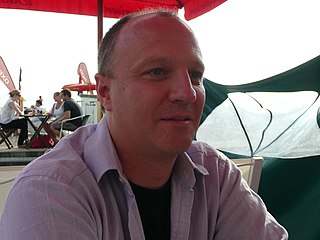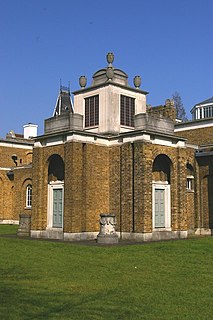This article needs to be updated.(June 2016) |
The steve.museum project was a collaborative effort to improve public access to and engagement with US art museum collections. It explored the possibilities of user-generated descriptions of works of art, also known as folksonomy. Project staff in 2011 comprised a group of volunteers, mostly from art museums, including the Guggenheim Museum, the Cleveland Museum of Art, the Metropolitan Museum of Art and the San Francisco Museum of Modern Art, as well as Archives & Museum Informatics. [1]

An art museum or art gallery is a building or space for the display of art, usually from the museum's own collection. It might be in public or private ownership and may be accessible to all or have restrictions in place. Although primarily concerned with visual art, art galleries are often used as a venue for other cultural exchanges and artistic activities, such as performance arts, music concerts, or poetry readings. Art museums also frequently host themed temporary exhibitions which often include items on loan from other collections.
Folksonomy is the system in which users apply public tags to online items, typically to make those items easier for themselves or others to find later. Over time, this can give rise to a classification system based on those tags and how often they are applied or searched for, in contrast to a taxonomic classification designed by the owners of the content and specified when it is published. This practice is also known as collaborative tagging, social classification, social indexing, and social tagging. Folksonomy was originally "the result of personal free tagging of information [...] for one's own retrieval", but online sharing and interaction expanded it into collaborative forms. Social tagging is the application of tags in an open online environment where the tags of other users are available to others. Collaborative tagging is tagging performed by a group of users. This type of folksonomy is commonly used in cooperative and collaborative projects such as research, content repositories, and social bookmarking.

The Solomon R. Guggenheim Museum, often referred to as The Guggenheim, is an art museum located at 1071 Fifth Avenue on the corner of East 89th Street in the Upper East Side neighborhood of Manhattan, New York City. It is the permanent home of a continuously expanding collection of Impressionist, Post-Impressionist, early Modern and contemporary art and also features special exhibitions throughout the year. The museum was established by the Solomon R. Guggenheim Foundation in 1939 as the Museum of Non-Objective Painting, under the guidance of its first director, the artist Hilla von Rebay. It adopted its current name after the death of its founder, Solomon R. Guggenheim, in 1952.
Contents
In a folksonomy users tag content for the purposes of later retrieval. It allows the public to introduce new search-terms, in the form of tags, to the formal library catalog that art and cataloging professionals themselves might not have included. It also allows curators and other museum professionals to see what the public sees in works of art. [2] [3] These terms will enrich the catalog and increase the likelihood that searchers of all levels will find what they are looking for. In the end, it is hoped that museum collections will be fully searchable by keywords rather than just by name or artist. [4] Early results from the project found that a number of tags were applied often, while others were applied just once per work of art. [5]

In information systems, a tag is a keyword or term assigned to a piece of information. This kind of metadata helps describe an item and allows it to be found again by browsing or searching. Tags are generally chosen informally and personally by the item's creator or by its viewer, depending on the system, although they may also be chosen from a controlled vocabulary.

A library catalog or library catalogue is a register of all bibliographic items found in a library or group of libraries, such as a network of libraries at several locations. A bibliographic item can be any information entity that is considered library material, or a group of library materials, or linked from the catalog as far as it is relevant to the catalog and to the users (patrons) of the library.
The project received a $1 million grant from the US Institute of Museum and Library Services, [5] from which the Indianapolis Museum of Art is working to apply folksonomy to its collection, [6] and is one of a number of related projects currently working to make art more accessible and to find its role in the digital age. [4] [7]

The Institute of Museum and Library Services (IMLS) is an independent agency of the United States federal government established in 1996. It is the main source of federal support for libraries and museums within the United States, having the mission to "create strong libraries and museums that connect people with information and ideas." IMLS "works at the national level and in coordination with state and local organizations to sustain heritage, culture, and knowledge; enhance learning and innovation; and support professional development." Their vision is "a democratic society where communities and individuals thrive with broad public access to knowledge, cultural heritage, and lifelong learning." In fiscal year 2015, IMLS had a budget of $228 million.

The Indianapolis Museum of Art (IMA) is an encyclopedic art museum located at Newfields, a 152-acre (0.62 km2) campus at the corner of 4000 N. Michigan Road and W. 38th Street, near downtown Indianapolis, northwest of Crown Hill Cemetery. Newfields also houses the Lilly House, The Garden, The Virginia B. Fairbanks Art & Nature Park: 100 Acres, the Beer Garden, and more. There are exhibitions, classes, tours, and events, many of which change seasonally. The campus was re-named in 2017 to better reflect the breadth of offerings and venues.







